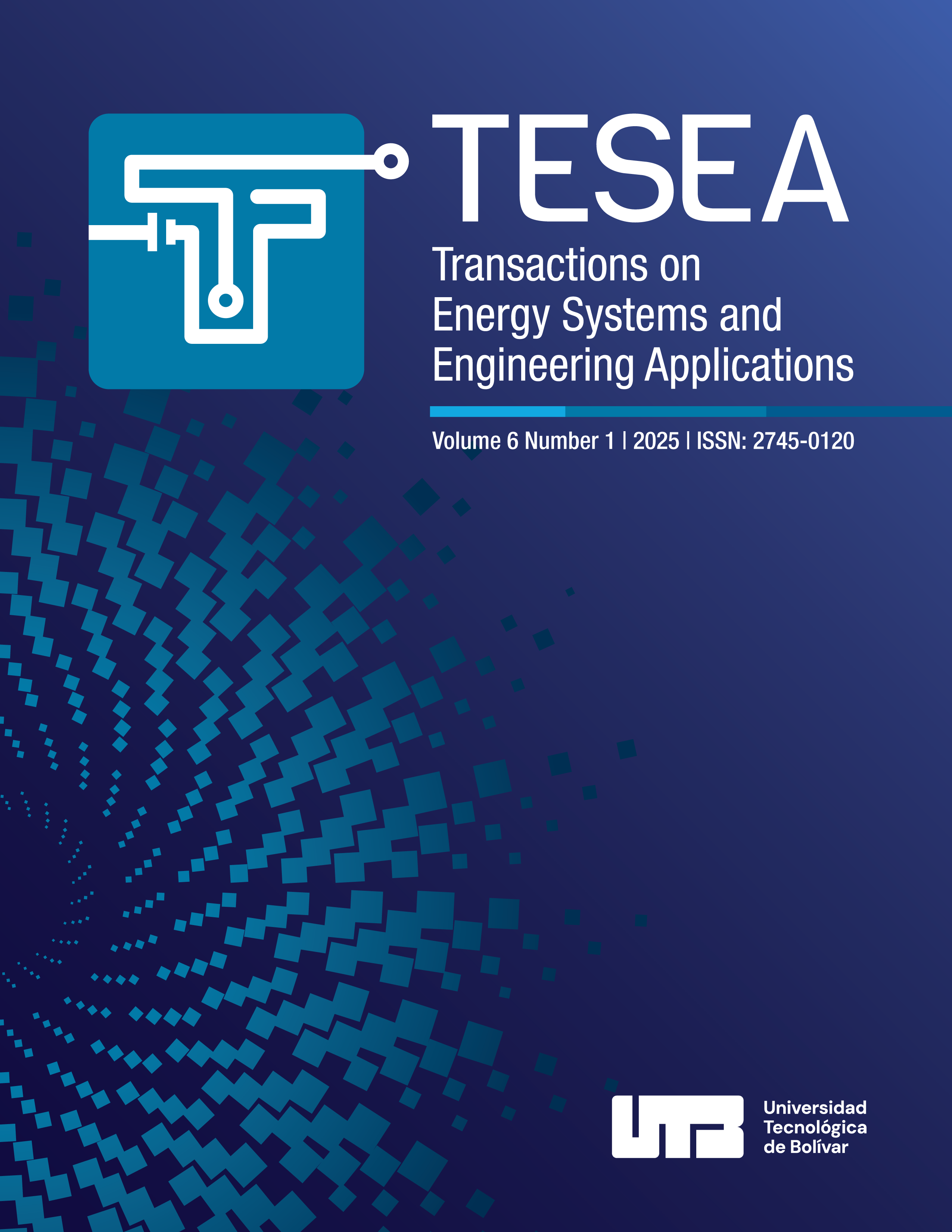Gasification of Lenga (Nothofagus pumilio) chips in a fixed bed system for rural area implementation: Magallanes case study
DOI:
https://doi.org/10.32397/tesea.vol6.n1.612Keywords:
gasification, lenga, patagonia, rural areas electrificationAbstract
This research explores the gasification of Lenga wood chips (Nothofagus pumilio) sourced from forest remnants within a fixed-bed gasification system with a 10 kWe capacity. The primary focus is on its potential application in remote rural regions. Utilizing a factorial analysis approach, we examine the influence of particle size (ranging from 3–8 mm to 8–20 mm) and the frequency of bed agitation (occurring every 2, 4, and 6 minutes) on critical performance indicators. Throughout the experimentation, the equivalence ratio (ER) remains constant within the range of 0.17–0.20. Cold efficiency demonstrates variability, spanning from 44.8% to 58.8%. Meanwhile, the High Heating Value (HHV) varies between 6.07 and 7.18 MJ/Nm³, with gasification temperatures fluctuating between 850 and 900 °C. The introduction of bed agitation, whether at high or low frequencies, has a notable impact on gas flow, leading to substantial deviations. Larger particle sizes tend to enhance gas flow and process stability but simultaneously have adverse effects on HHV, ER, and overall process efficiency. During transient analysis, it becomes evident that gas flow requires a prolonged duration to achieve stabilization. Frequent agitation cycles (at a rate of 1/140 s⁻¹) result in fewer deviations but a slower stabilization process, whereas less frequent agitation (1/380 s⁻¹) induces greater variations but accelerates the stabilization phase. This comprehensive investigation offers valuable insights into the optimization of Lenga wood chip gasification, particularly for addressing energy needs in rural areas by harnessing forest residues.
Downloads
Downloads
Published
How to Cite
Issue
Section
License
Copyright (c) 2025 Arnaldo Verdeza, Humberto Vidal, Yuhan Lenis, Antonio Bula

This work is licensed under a Creative Commons Attribution 4.0 International License.
Authors retain copyright and grant the journal right of first publication with the work simultaneously licensed under a Creative Commons Attribution 4.0 International License, which allows others to share the work with an acknowledgment of the work's authorship and initial publication in this journal.
















